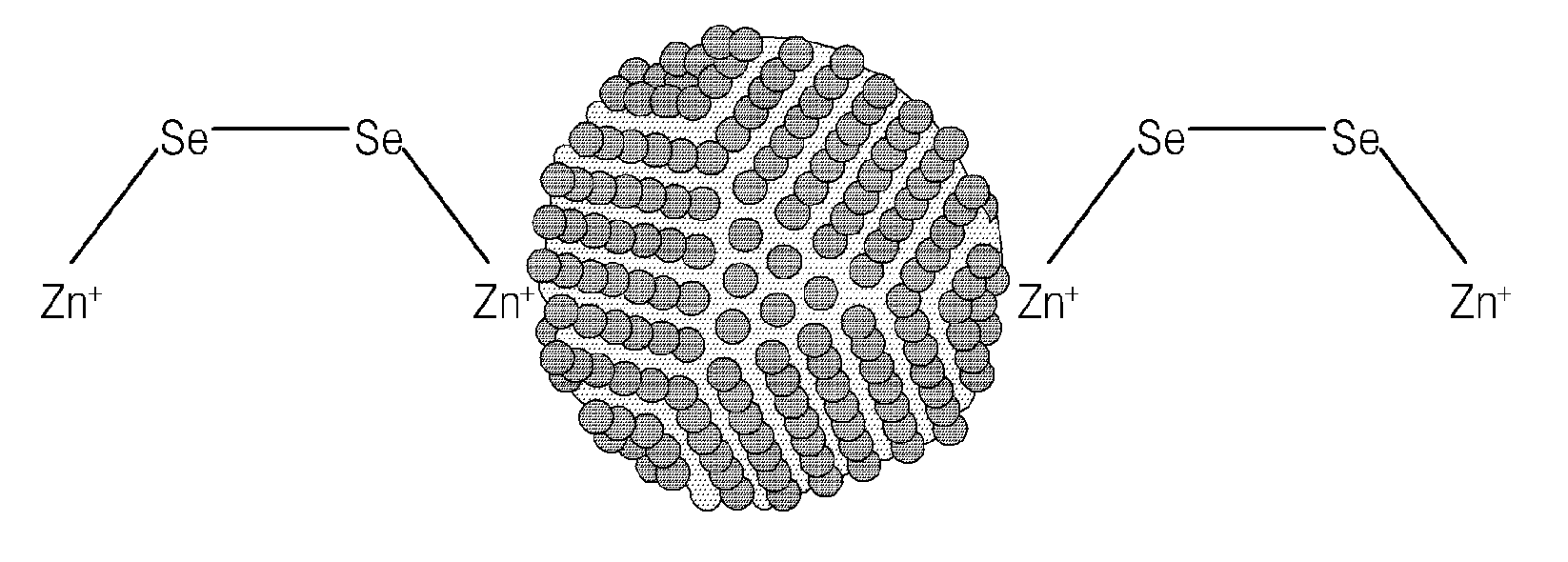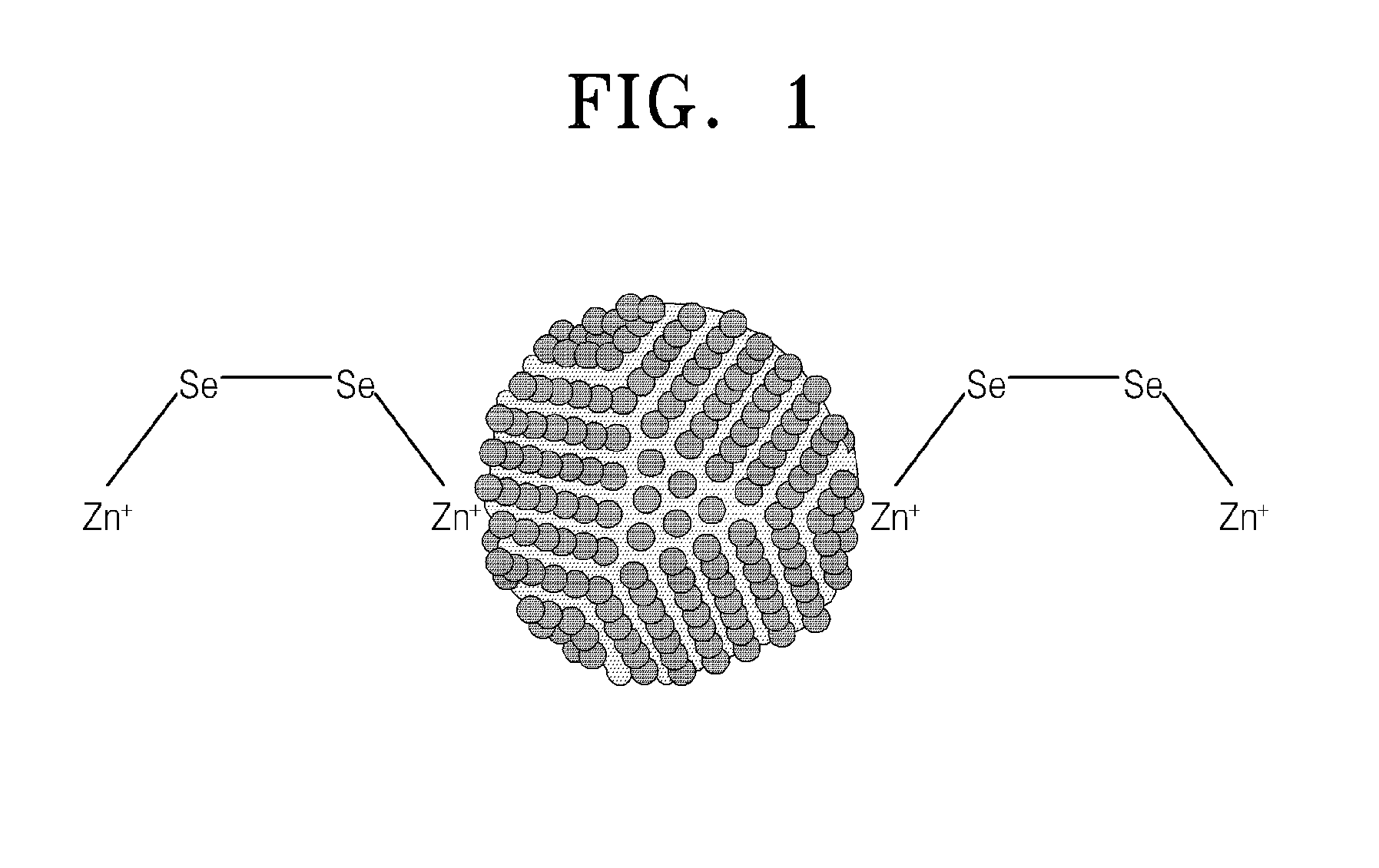Nanoparticles passivated with cationic metal-chalcogenide compound
a technology of passivating nanoparticles and cationic metals, applied in the field of nanoparticles, can solve the problems of reducing the electrical conductivity of quantum dots, relatively strong toxicity and explosiveness
- Summary
- Abstract
- Description
- Claims
- Application Information
AI Technical Summary
Benefits of technology
Problems solved by technology
Method used
Image
Examples
example 1
Zn2Se2 Synthesis
[0053]3 g (38 mmol) of Se and 9 g (23.8 mmol) of NaBH4 were added into 100 g of ethanol, while a reaction flask having the above mixture contained therein was put into an ice bath such that a temperature of the mixture was not permitted to rise above 20° C. A first reaction mixture thus obtained was reacted while being stirred while being refluxed in a nitrogen atmosphere. The reaction temperature was 80° C., a reaction pressure was atmospheric pressure, and a reaction time was 1.5 hours. As a result, a second reaction mixture containing Na2Se2 was obtained. 4.5 g of Na2Se2was obtained from the second reaction mixture by removing by-products and allowing only Na2Se2to remain by using vacuum at room temperature.
[0054]FIG. 2 illustrates the results of 77 Se nuclear magnetic resonance (NMR) analysis of Na2Se2 obtained from the second reaction mixture. In the analysis process, methanol substituted with heavy hydrogen was used as a solvent. As illustrated in FIG. 2, a dou...
example 2
Preparation of Quantum Dots Passivated with Zn2Se2
[0059]18 mg of Zn2Se2 obtained in Example 1 was dissolved in 3 ml of ethanolamine to prepare an MCC solution. A quantum dot dispersion was prepared in which 1 wt % of CdSe (average particle diameter of 4 nm) was dispersed in hexane. 0.1 ml of the MCC solution was added to 3 ml of DMSO to prepare an MCC / DMSO solution. 6 g of the MCC / DMSO solution, 1 ml of the quantum dot dispersion, and 5 g of hexane were mixed and then stirred at room temperature for 3 hours. CdSe quantum dots in a hexane layer were gradually transferred to a DMSO layer, through a ligand-exchange process (see FIG. 6), and quantum dots passivated with cationic metal-chalcogenide (Zn2Se2—CdSe) were formed. Zn2Se2—CdSe was precipitated using butanol to obtain 5 mg of Zn2Se2—CdSe.
[0060]FIG. 7 illustrates the results of surface zeta potential analysis of CdSe quantum dots passivated with Zn2Se2. It may be understood that CdSe quantum dots before the modification with MCC...
PUM
| Property | Measurement | Unit |
|---|---|---|
| particle size | aaaaa | aaaaa |
| core-shell structure | aaaaa | aaaaa |
| core-shell-shell structure | aaaaa | aaaaa |
Abstract
Description
Claims
Application Information
 Login to View More
Login to View More - R&D
- Intellectual Property
- Life Sciences
- Materials
- Tech Scout
- Unparalleled Data Quality
- Higher Quality Content
- 60% Fewer Hallucinations
Browse by: Latest US Patents, China's latest patents, Technical Efficacy Thesaurus, Application Domain, Technology Topic, Popular Technical Reports.
© 2025 PatSnap. All rights reserved.Legal|Privacy policy|Modern Slavery Act Transparency Statement|Sitemap|About US| Contact US: help@patsnap.com



